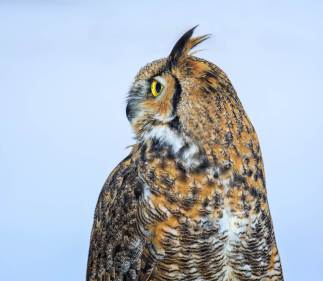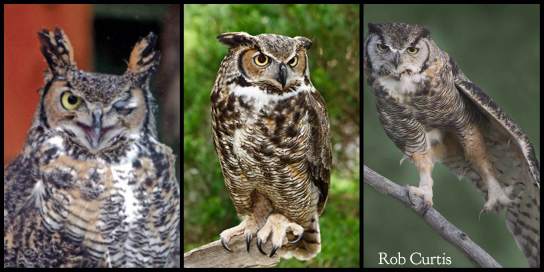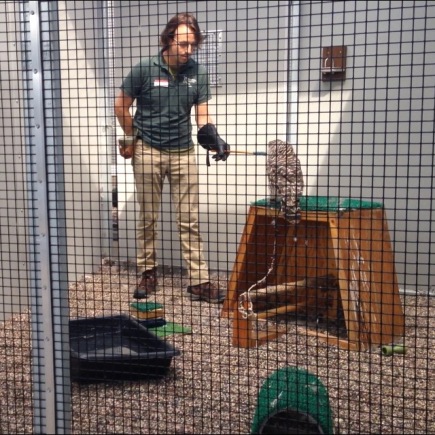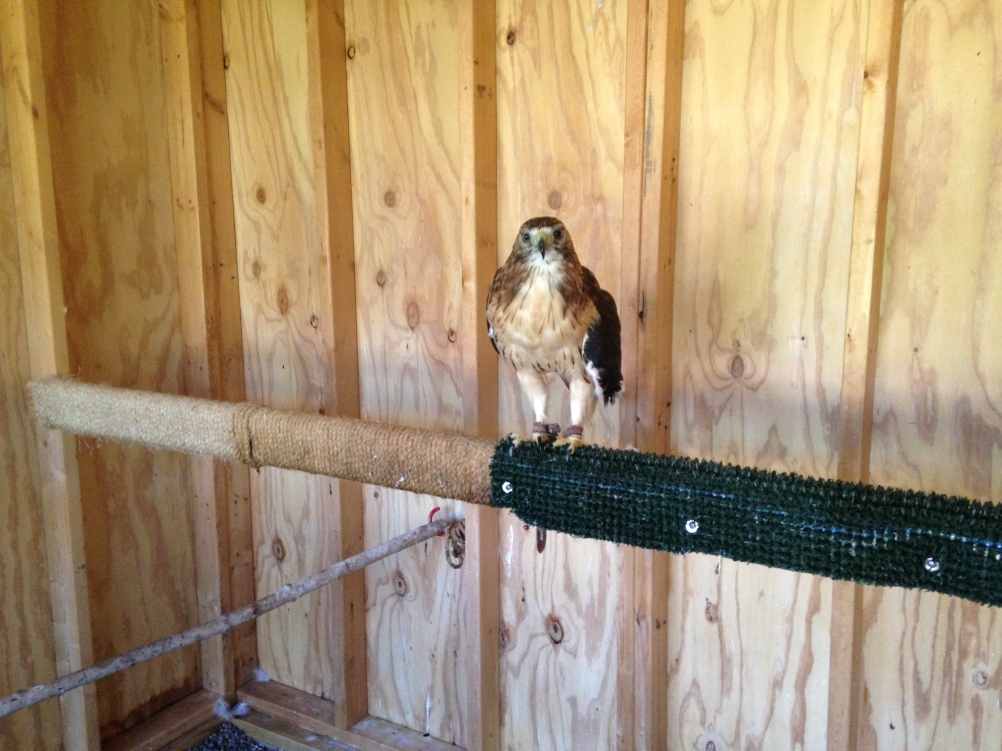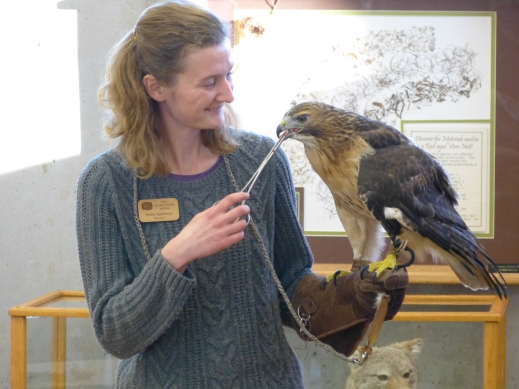
I have taken Carson’s training nice and slow. I go at her pace and let her tell me what she is comfortable with. But sometimes I have to take a risk. When Carson was inside last week to escape the cold temperatures outside, I decided to leap ahead in my carefully sequenced training plan to see how she would do in front of a group of people. We have spent months building trust in the mew, but I didn’t know if that comfort level would transfer to the classroom.
I was relieved to have a small group of well-behaved adults for Saturday’s “Talon Talk” program; it would be the perfect audience for Carson’s latest debut. Her first test was coming out of the crate. Just like we had practiced over the previous week, she hesitated at first, looking between the glove and the room outside the crate door. After a moment she set one foot on glove and tested its stability. My hand held her weight without wavering so she peeled the second foot off the perch and placed it on the glove.
Her next challenge was staying calm in front of the audience. I watched her body language out of the corner of my eye. She stood up straight, looking around at each corner of the room, and even took a few mouse tidbits. I was impressed; she didn’t seem concerned about a thing. After a few minutes, I brought her back to the crate while she was still comfortable, completing her portion of the program as a fun, positive experience for both of us.
